Nature and Culture in the Environs of Madrid

Depending on the season and the personal interests, an excursion to the protected convent and castle complex El Escorial or a hiking tour in the mountains might be more attractive as a city sightseeing. Specially those who want to have a tranquil day without mass tourism will get their money worth during the visit of the mountain area La Pedriza or the reservoir San Juan."
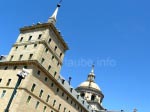
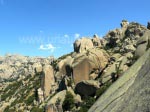
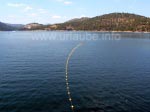
El Escorial - Convent, Church and Castle in One
The generos castle complex El Escorial, at approximtely 60 kilometres from Madrid, is one of the most popular destinations for a one day excursion in the surroundings of the Spanish capital. The complex in which Felipe II spent a part of his life, also includes a convent, a school, a valuble library and a royal burial chamber.
From the exterior, the huge dimensions are immediately catching the eye - the building of the Escorial has a base area of 207 metres x 162 metres - as also the somber building style. The Escorial was built between 1563 and 1584 by Juan Bautista de Toledo and Juan Bautista de Herrera.
At a few kilometres distance from the complex, there is the Silla de Felipe II, a look out point with a set made of stone, from which Felipe II observed the construction works. The Silla de Felipe can be viewed still today and should be in any case included into the visit of the Escorial - the view is worthwhile to see.
The Complex
The interior of the Escorials is - as its outer apperance - rather sparsely arranged. The alleyways as similiar to the ones of a castle, stable and somber, without any stylish adornments. The whole construction as also the referring plans can be viewed in the Museo de Arquitectura that follows on the Sala de Tapices in the entrance area.
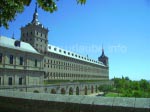
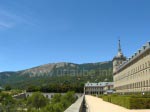
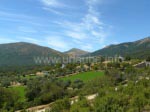
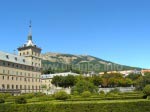
In the Museo de Pintura, some different pintings are exposed in different halls, each hall represents a different style. In the first hall there is, for example, the last supper is represented - in fact, a very popular motif. But this painting of Michel Coxcie outstands insofar that the visitors are sitting at a small table and not, as usual, at a large table. In the other paintings, the atmosphere is aminly festive, in this one, it appears gloomy - as if all where already feeling what is going to happen in the near future.
In the other halls, the paintings represent the still life of the flemish ans Italian paintings that, with their dark colour elements and detailschwache faces appear to be very cheerless. In the stylish hall Obras maestras de colección (master pieces of the collection), the favourite paintings of Felipe II are exhibited. Almost all paintings are of large dimensions and quite long, a thing that is linked to the representation of different live levels from earth up to heaven.
In the burial chamber, there are the royals and infants resting there - in the Spanish linguistic usage, the Princes and Princesses were entitled like that - spatially separated. I did not have any clear idea of the grave, but then I was really amazed: Contrary to other rooms that appear dark with their dark furniture and dark floors, the cooly appearing grave is tiled and the colours white and blue dominate - it is not a grave as one does imagine a grave to look like. The chamber Panteones de los infantes was built as per the order of Isabel II from the year 1862 and shows how many children died at a young ge these days. In order to respect the resting bodies, the visitors are explicitly required to keep the dead silence.
The arrangement of the large library is tastefully aligned with golden colour elements and brown shelves. The ceiling painting shows two angels and lightly dressed people in different situations, thing that makes it to appear agitated. It was arranged by Pellegrino Tibaldi, an Italian artist.
Further Information
In the Escorial, one can take part to the guidances in English, French and Spanish language that gives a detailed insight into the rooms. But one can also view the worthwhile seeing areas with a "normal" ticket, that is, as per my opinion, absolutely sufficient. On Wednesdays, the entrance is free for EU-citizens, on the other days, the students get a discount.
From the subway station Moncloa (L3, L6), a bus deprts to the Escoril; the train departs from the subway stations in Atocha (L1) or Chamartín (L10). By car, one has to choose the road N VI to Villalba or the N VI and the country road C505. At a few kilometres distance from the Escorial there is the Valle de los Caídos (valley of the fallen) with its monument, a cross of granit that is 150m heighted and 46m wide tht is even visible in front of the mountains of the Pedriza. The monument reminds on the killed people during the Spanish civil war and serves at the same time as the last resting place of Franco.
La Pedriza - A Place like no Other
Slowly, the darkness of the morning dawn disappears. It is still very cool, the Night in April was very cold. In the sky, the first colour games of the rising sun are visible - a touching moment; We listen to the first birds chirping silently, in the distnce, there are mountain goats to see; the nature awkes. The sun radites on the muntain rocks. The mighty Yelmo - a specially known, huge rock - appears with its barely 1700m height even more impressive than it already is during the daytime.


The Mountains
We are in the mountains La Pedriza that is a part of the Sierra Guadarrama. The Pedriza is located in the community of Manzanares el Real, where also the river Manzanares originates that flows up to Madrid.
The countless boulders of different sizes and shapes are characteristical - stones that probably do no exist in another place of the world in these sizes and shapes. This is exactly why the area of the Pedriza is a famous and very popular place for climbing, also if the mostly practiced friction climbing on the granit rock is something one needs to get used to. But la Pedriza is also unique for hiking. What is thereby important is to stay on the marked paths, as one can easily get lost in the mountains.
At the mountain shelter Canto Cochino that is located at the bottom of all, one can get refreshed in two bars and also get there some information about hiking tours. But the condition for this is to speak the Spanish language. One can get some written information in the small city Manzanares el Real that is located underneath the Pedriza and that has a small tourist information hut.



In order to plan in advance it might be recommendable to get previously informed, as, depending on the season, the weather can be unsettled and make the plan eventualy more difficult. The perfect time for hiking is between March/April and June; A possible route is, for example, a four-hours tour departing from Canto Cochino in direction to Yelmo and Collado dehesilla. On the marked path, one passes the Refugio Giner, a kind of shelter from which one can get back to the starting point.
A little easier and shorter hiking path of pproximately three hours starts at Cacho de los muertos and leads to the collado del cabrón, charca verde and ends in the pub restaurant Canto cochino.
Further Sightseeings of Manzanares
Those who want to enjoy some culture beside hiking, can visit in the centre of Manzanares the cubic castle at the entrance of the town. It was built in the 15th century and restored at the end of the seventies, before the first visitors came. In a small tourist guide of the Manzanares, one can see some further sightsseings as for example the church Nuestra Seņora de Las Nieves ("Our woman from the snow") from the 15th century, the Museo Etnológico y Arqueológico ("Museum of Ethnic and Archeology") or the pilgrimage chapel Ermita de la Peņa Sacra ("pilgrimage chapel of the hllow mountain"). I never visited these sightseeings but for some they might be interesting.
More Information
The Pedriza is located at approximtely a 30 minutes walk from Manzanares El Real that can be easily reached by bus. By car, one has to take from Madrid the motorways M-607, M-609 and M-608 up to Manzanares El Real. One drives through Manzanares and turns to the right in the Avenida de La Pedriza that ends at the campsite El Tranco. There, one can park the car and start walking.
With the bus, one has to get out at the main road of Manzanares (in front of the supermarket Eroski). There is also, by the way, small tourist information centre that does not only inform about the sightseeings but also about the bus schedule. The bus departs from the subway station Plaza de Castilla (L10) in direction to Manzanares El Real.
More Excursions
Depending on the time one hs for a visit to Madrid and the surroundings, also the smaller destinations for an excursion can be very attractive, as for exmple the three following places.
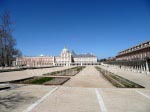
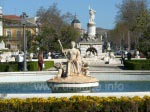
Aranjuez
Aranjuez is approximately at 47 km at the south of Madridand is rapidly reachable with a Cercanía from Atocha (L1). In Aranjuez one soon notices that it is a former royal residence: not only the palace but also the avenues, bridges and specially the generously arrnged gardens of Aranjuez show the former significnce of the small city.
Alcalá de Henares
Alcalá de Henares is currently pur in relation to the university Colegio Mayor de San Alfonso of the historical city. The outstanding university was founded in the year 1498 and was displaced in the year 1836 to Madrid and in the year 1973 back to Alcalá de Henares.
Moreover, Alcalá de Henares is also famous for Miguel de Cervantes, whose "Don Quijote" is one of the most famous pieces of literature. In order to honour the famous author, the Museo Casa de Cervantes has been arranged where a lot of souvenirs are exhibited.
Reservoir San Juan
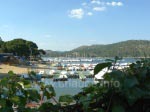
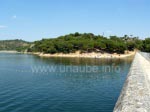
During hot days, an excursion to the lake is one of the best possibilities to spend the day - the Madrileneans are of the same opinion and consider the reservoir San Juan as a popular destination for an excursion. It is located close to the small city San Martín de Valdeiglesias, at a distance of approximately 70 kilometres from Madrid and offers an option for a wonderful relaxed day: not only swimming, but a kayak tour on the lake is highly recomendable. One can also have an excellent paella there, but it has to be previously ordered for a certain time of the day in the small restaurant of the proximity.

Back to the index Madrid
Author: Stefanie Kotulla; Copyright 2008-2008: Patrick Wagner, www.tourist-guide.biz
|